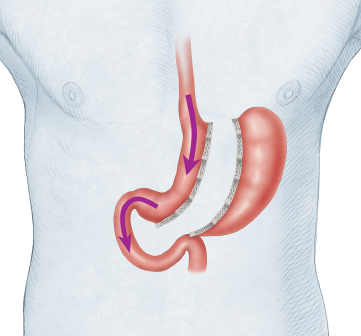Gastric Sleeve surgery (sleeve gastrectomy) is a weight loss surgical procedure during which a large portion of the patient’s stomach is removed. The surgeon reduces the patient’s stomach to about 15 to 20 percent of its original size. The term “sleeve” refers to the shape of the stomach which will resemble a sleeve or tube-like structure once the procedure has been completed.
This surgical procedure permanently reduces the size of the patient’s stomach. Sleeve gastrectomy restricts the amount of food that can be consumed. It also results in hormonal changes that promote significant weight loss. Sleeve gastrectomy procedures are performed laparoscopically. The procedure is not reversible. However, if necessary, the sleeve gastrectomy may be revised.
How Gastric Sleeve surgery is performed
Gastric sleeve surgery is a laparoscopic procedure that uses minimally invasive techniques to eliminate the need for large abdominal incisions and the associated risks that come with them.
During surgery a bariatric surgeon divides the upper portion of the stomach from the lower portion leaving a tube-shaped “sleeve” to serve as the stomach. Most sleeve gastrectomy procedures require just three to five small incisions. The procedure is performed on an inpatient basis and takes about 90 minutes. The surgery does not affect the sphincters (circular muscles) that connect the stomach and the esophagus or lower intestine.
Please Note: The excess weight loss listed above is just an average. A patient can lose more or less than the average amount of expected excess weight loss based upon how well they follow the program guidelines.





